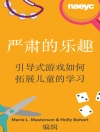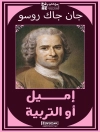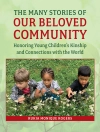Connect nature play, outdoor experiences, and STEM learning for young children with activities, real-life examples, and educator resources. Nurture young children’s innate tendencies toward exploration, sensory stimulation, and STEM learning when you connect outdoor learning and STEM curriculum. Discover the developmental benefits of outdoor learning and how the rich diversity of settings and materials of nature gives rise to questions and inquiry for deeper learning.
Full of activities, examples, and resources to take the fun of STEM outside, this book will help teachers articulate connections between nature play, outdoor experiences, and STEM learning in young children. Use STEM and nature-based learning to nurture children’s curiosity and exploration of the world.
Patty Born Selly is an assistant professor of environmental education and STEM at Hamline University. She previously served as the executive director of the National Center for STEM Elementary Education at St. Catherine University. Selly has over twenty years of experience in early childhood education, has written two books, and regularly consults other educators on science and nature education approaches for young children.
Inhoudsopgave
Introduction
Chapter 1 What is STEM?
a. Definition of STEM
b. Why Care?
i. Societal context
ii. Achievement Gap
iii. 21st Century/Social emotional development
iv. Cognitive processes that help self-regulation and executive function
c. Nature/STEM links…why do they complement each other?
Chapter 2 Kids need nature
d. Benefits of Play/Learning/outdoor time
e. Make it Real (Bringing nature in?)
i.
f. Attention Restoration Theory
g. BRIEF barriers acknowledgement
Chapter 3 What does High Quality STEM education look like?
h. Inclusion
i. Differentiation
j. Learning styles
k. A bit about planning
1. Safety concerns
2. Insects
3. Sunburn
4. Classroom dynamics
Chapter 4 Domains Overview
l. Science
i. Domains of science
ii. Where science happens in the EC classroom setting now
iii. Process skills
iv. Inquiry process
v. Crosscutting concepts
vi. Standards and recommendations
1. NSTA position statement
2. NGSS
m. Technology
1. Tools
2. Digital technology
n. Engineering
i. Why eng in early childhood
1. Standards
2. Important thinking skills
o. Math
i. Math in EC classroom
ii. Math standards and recommendations
iii. Take it to the next level
Chapter 5 How Can I?
p. Catalysts and what kids might do with them (DO)
q. Words (SAY)
r. Classroom Environments: Creating a STEM rich space (FEEL)
s. Community
Chapter 6 STEM Starts (Activities)
x. What is a STEM start?
y. Specific examples of them
Conclusion












